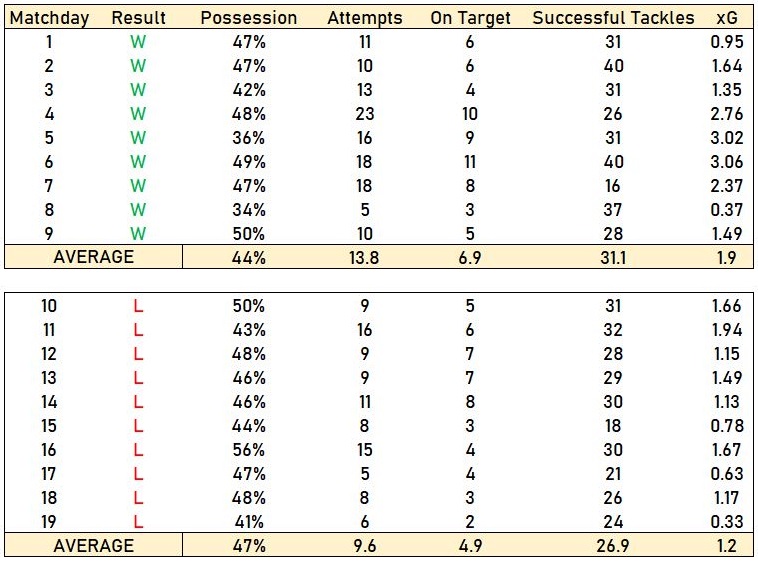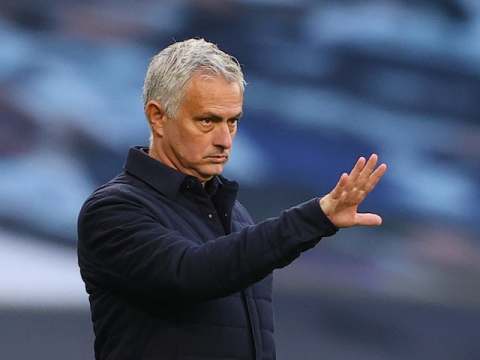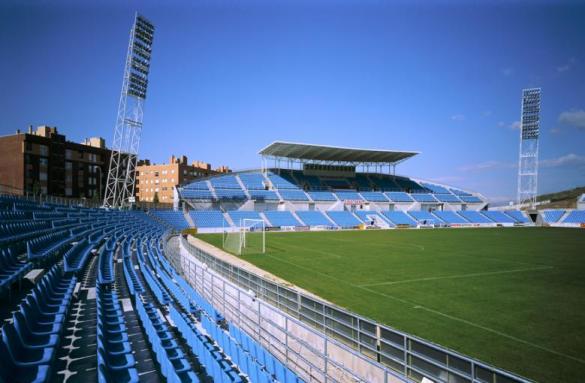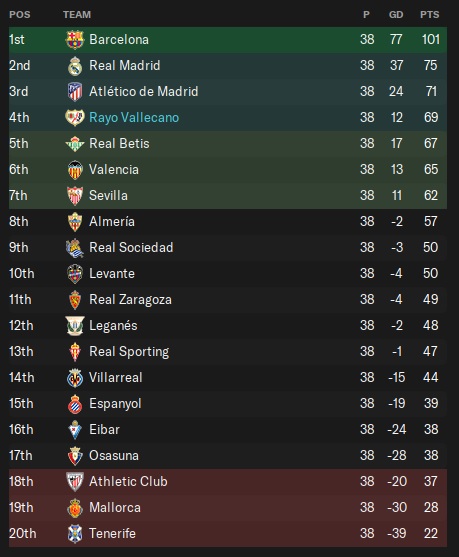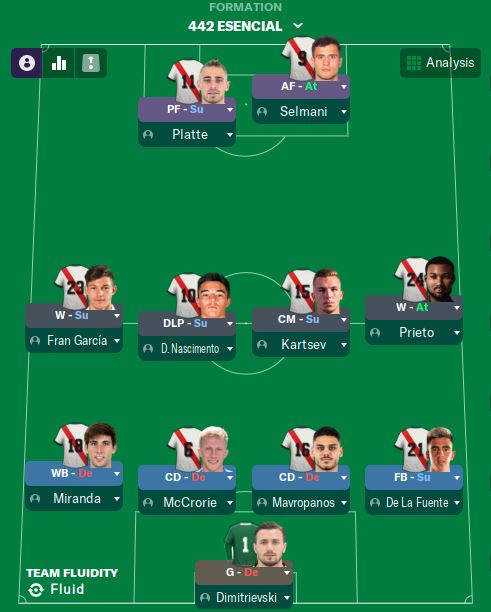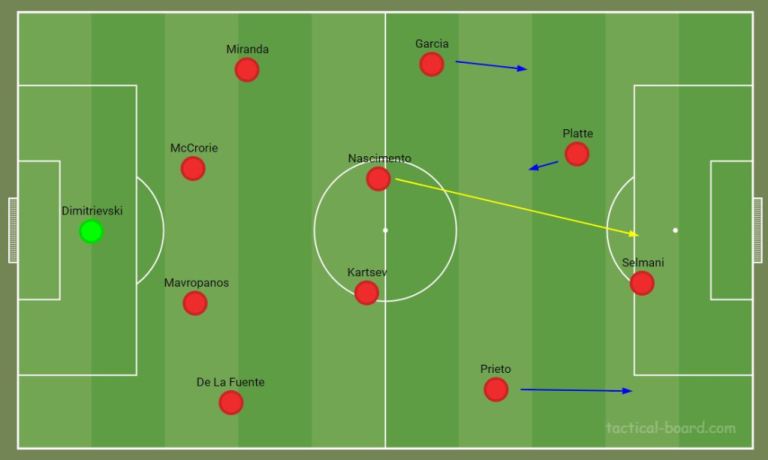This is post ten of a wider series. A series for FM21.
“You either die a hero, or you live long enough to see yourself become the villain.”
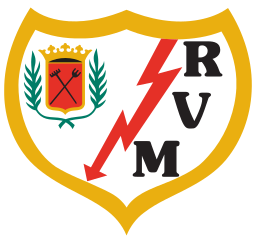

The losing streak
26 May 2025
Back on the 28th of February 1960, Las Palmas defeated Valladolid 4-0 in a top flight Spanish football match to grab the points in a season where they were ultimately relegated. The reason this was such a memorable event was that it ended a record-breaking back-to-back losing streak for Las Palmas, stretching back to the 13th of December 1959. Shockingly, this was 11 league defeats in a row.
There is good reason that this record has stood firm for more than sixty years. Even the worst sides in the history of football can win or draw occasionally. Even accidentally.
Fernando Teixidó‘s Rayo Vallecano side of 2024/2025 will be relieved they didn’t take Las Palmas’ place in the history books, but boy did they come close. El Rayo lost 10 LaLiga games back-to-back in a period lasting nearly three months. Incredible.
Prior to this run, Rayo had enjoyed promotion as champions of LaLiga 2 followed by 6th, 7th and 2nd placed finishes in the top flight under Teixidó. What’s more, they had started the 2024/25 campaign in wonderful form, winning their first nine league games in a row, collecting the maximum 27 points.
Before taking on Atlético Madrid at home on the 30th of October 2024, Rayo were sitting on top of the table, conceded only twice in eight games following their 3-2 season opener away at Real Zaragoza.
How did it happen?
Many publications at this point will throw in spurious graphs, charts and statistics where they don’t necessarily provide actionable insight. In the case of nine straight wins followed by 10 straight defeats however, it is worthwhile to look at the numbers behind the performances.
The use of performance statistics is a divisive subject, but not if you are logical about it. If you have ever read a book written about analysis in football or any decent standard of sports journalism in recent years, you will see that the game is changing, and statistical scrutiny is not only integral to performance coaching and tactical decision-making in the modern game, but also crucial to any decent level of intelligent dissection of sporting performance. But only where it adds value. This is where there is a key disconnect in public opinion around this type of work. Dots and numbers are only worthwhile if they really tell you something beyond watching the highlights package.
The days of the ex-pro on the sofa highlighting that it was a “pinged pass and a well taken finish” are (hopefully) numbered. This ‘analysis’ serves only to narrate what your eyes have already seen.
Tangent over!
During this torrid spell, the under-fire performance analysts at Rayo Vallecano would have been frantically working around the clock in an attempt to help their beleaguered manager out of their tragic slump in form by providing some sort of context to the results. theangrylinesmen has put together some of its own.
Watching Rayo Vallecano continuing to play in their signature narrow 4-3-1-2 with wing-backs providing the width, midfield play provided by three deep-lying defensive midfielders and a classic number 10 behind a striking pair; nothing seemed off to the naked eye while watching the matches. Tactical consistency had been a hallmark of Teixidó’s Rayo for four years and counting, almost to the point of stubborn dogmatism. So there hadn’t been a sudden departure in playing style that could explain the absurd flip in results.
Playmaker Ömer Beyaz and wing-back Tiago Araújo were a few months later to leave the club in January 2025 for moves to two Chinese clubs for an eye-watering combined £50.5million. Could their heads have been turned in the months prior to their respective moves? Although, neither were first choice in either attacking midfield or at left-back, so I can’t imagine this was a key factor.

Star striker Astrit Selmani was still chief among the goals that Rayo did manage to score during the losing streak, so neither was it specifically a case of off-form strikers being unable to deliver the goals when the rest of the team were setting up the chances.
So what happened?
This is where the numbers start to become useful.
When comparing the winning streak to the losing one, a specific problem doesn’t emerge as the issue, instead an alarming wider negative trend does. The ratio of shots on target to shots taken in total per game remained roughly the same at approximately 50%, but the volume of shots taken per match plummeted by 30% across the losing spell.
Also, the xG (quality of goal-scoring opportunity in terms of how likely shots are to hit the back of the net) generated across the losing streak was 36% lower on average too. This shows that not only shots at goal were much less regularly occurring but the quality of those chances created dropped significantly too. Couple this with a 13.5% decrease in the number of successful tackles Rayo were managing per match, and clearly the problem was at both ends of the field.
Interestingly the only notable statistic that was on paper “better,” was the average possession. In what could be considered rare, Rayo had only 44% of the ball when they could not stop winning matches, but 47% when they couldn’t win a point for love nor money. Perhaps, as José Mourinho famously suggested, having more of the ball just leads to more opportunities to make mistakes, and capitalising on mistakes is what wins football matches.
So, there is a combination of factors here.
Being allowed more of the ball by the opposition suggests that after 200+ matches as Rayo Vallecano manager and three seasons inarguably over-performing with what is a decent counter-attacking side, other teams are starting to respect Rayo as opponents, thinking more pragmatically about how they can nullify the regularity of their chances.

Harvey Dent famously and fictitiously once said “You either die a hero, or you live long enough to see yourself become the villain.” In this analogy, it seems like as chief cheerleader for the perpetual underdog and plucky upstarts, Fernando Teixidó was suddenly considered a tangible threat to the traditional powerhouses of Spanish football. From LaLiga’s beloved unsung hero to its biggest villain.
Win nine games in a row and sit above Barcelona and Real Madrid in the league table and the conversation around your team’s level of quality and the threat you possess will change overnight.
And it did.
What happened next?
Something had to change. Football is a fickle business. Four years of overperformance and the adulation of the Rayo Vallecano fans can only be stretched so far. Yes, it was only three months, but what if three months became six? A team in freefall is a tragic thing to witness, and conversations must have been had at board level around who would replace the Peruvian in charge, should the horrible form continue.
But then it happened.
It was the 22nd of January 2025 and Rayo’s temporary home, the Coliseum Alfonso Pérez had just played host to a long overdue narrow 1-0 victory for Rayo Vallecano over visitors Real Zaragoza, the players and fans celebrating the rot stopping like victory in a cup final. A clearly emotional Fernando Teixidó applauded the fans at full time, and it felt like it could have been a real turning point.
It turns out that it was.
Rayo Vallecano would only lose three more games before the end of the season, drawing three and winning a further twelve.
Finishing fourth in a season that was not in only in abject freefall for almost a third of it but also heading quickly towards the record books for the wrong reasons, is an astonishing end to the story.
But wait, we didn’t discuss how it was turned around.
The turnaround
The classic proverb states that “necessity is the mother of invention” and it was definitely necessary for Teixidó to alter something fundamental in order to save the sinking ship. They needed to get back to averaging almost 14 attacks per game. Back to winning tackles again. No one could predict that what was to come would be a complete change of shape.
Switching his team to a 4-4-2 formation is hardly revolutionary, but it represented such a departure from Teixidó’s famed ‘La Palanca’ system, that it shocked everyone from pundits to opposition defenders.
Retained are the strike pair with one dropping and pressing while the other plays off the shoulder, but gone is the roaming number 10. Gone too is the pivoting ‘lever’ in the defensive midfield area. The full-backs remain, but are asked to be more restrained in their attacking endeavours as there are now wide midfielders on the pitch.
Still expected to press high and counter aggressively, Rayo’s players now rely on traditional wing play; primarily via new signing José Prieto down the right flank and the former attacking midfielder turned deep lying playmaker Diogo Nascimento in the middle, who is tasked with playing Kevin De Bruyne-esque curving killer through balls with his incisive passing ability to the strikers.
Ironically moving to a much wider system has allowed more space in the middle of the park for Rayo’s most creative players to operate in. This in turn is unlocking defences with increased regularity. Nascimento’s midfield partner Eden Kartsev is functional and hard-working, but is often tasked with dragging opposition defenders into the channels, opening those gaps for deep through balls or winger’s crosses.
Given the impact that the change in system had, it seems to have turned the page into a new chapter, Fernando Teixidó: the pragmatist.
Such has been the acceptance of the new system, reports are linking Rayo Vallecano with a host of wide midfield targets for this coming summer. Everyone from Uruguayan Manchester United winger Facundo Pellestri to 32-year old Basque veteran, Iker Muniain.
How did the other competitions go?
Rayo Vallecano‘s first ever campaign in the UEFA Champions League was a mixed bag. An impressive 6-0 victory over Basel was followed by an emphatic 5-2 win over Sporting Lisbon. Despite defeating Basel again in the away fixture, unfortunately Rayo’s horrible slump in form coincided with half of the group games, and abject displays in both legs against PSG and the home leg of the Sporting tie leading to the misfortune of dropping into the UEFA Europa League, despite bagging nine points.
Drawing Liverpool was unfortunate in the second knockout round of the Europa League, and despite comfortably dispatching of Gladbach over two legs in the previous round, the English giants proved much too strong for El Rayo and they were out of Europe.
Cup performances were of a decent quality and arguably exceeded expectations, but in another case of unfortunate luck of the draw, meeting Barcelona in the 5th round of the Copa del Ray was a bridge too far.
What else?
After his £1.6million return to Rayo Vallecano last summer, Antoñín has very much looked the player he was when his three-year loan spell at the club ended a year before. The pacey striker bagged 14 goals in 28 LaLiga appearances this season and became Rayo’s all-time league goalscorer. He now has scored 63 league goals in total.

63 does not seem a massive number for a record goalscorer of a historic club to have, but this fact, plus the reality that their record signing is still just the £4million paid for Diogo Nascimento, reminds us not just of Rayo’s historic player churn, but also their humble roots and continuing financial caution.
There is a big summer ahead. Should Teixidó stick to the new 4-4-2 system, reinforcements are needed for the flanks. Although good form has returned and a UEFA Champions League qualification finish was secured again, Rayo’s losing streak shows just how volatile the business of football can be.
Onwards and upwards!














Carl Hagedorn for theangrylinesmen
Thanks for reading.
FM Stag



